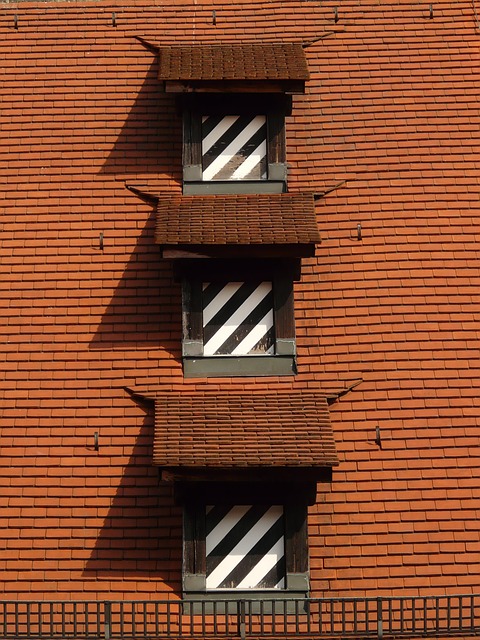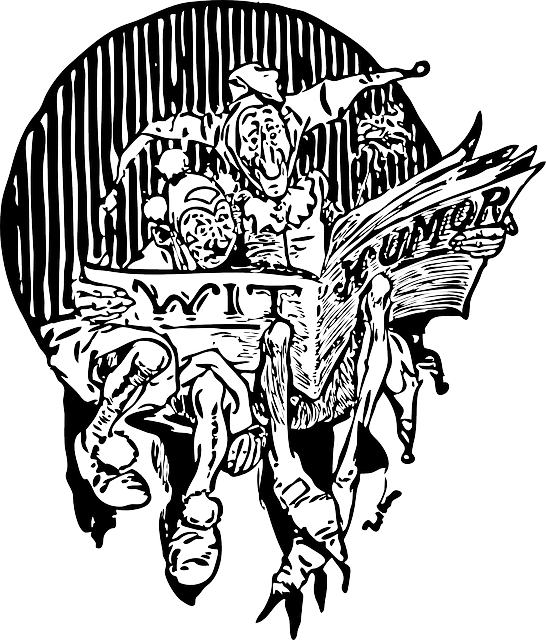رئاسة حيدر آباد
|
رئاسة حيدر آباد
ریاست حیدرآباد
హైదరాబాద్ రాష్ట్రం | |||||||||||
|---|---|---|---|---|---|---|---|---|---|---|---|
| 1803–1948 | |||||||||||
الفهم
Coat of arms
| |||||||||||
|
حيدر آباد (بالأخضر الداكن) ومقاطعة برار التي لم تك جزءاً من رئاسة حيدر آباد إلا أنها كانت خاضعة للنظام بين 1853 و1903 (بالأخضر الفاتح).
| |||||||||||
| المكانة |
ولاية أميرية في الهند البريطانية (1803–1947) دولة غير معترف بها (1947–1948) |
||||||||||
| العاصمة | حيدر آباد | ||||||||||
| اللغات الشائعة | Dakhini, Marathi, Telugu, Persian, Kannada | ||||||||||
| الدين | الإسلام، الهندوسية | ||||||||||
| الحكومة | ولاية أميرية (1803–1948) مقاطعة في دومنيون الهند (1948–1950) دولة جمهورية الهند (1950–1956) |
||||||||||
| نظام | |||||||||||
• 1720–48 |
قمر الدين خان (first) | ||||||||||
• 1911–48 |
Osman Ali Khan (last) | ||||||||||
| Prime Minister | |||||||||||
• 1724–1730 |
Iwaz Khan (first) | ||||||||||
• 1947–1948 |
Mir Laiq Ali (last) | ||||||||||
| الحقبة التاريخية | سلطنة المغل (1724-1803) مملكة حيدر آباد (1803-1948) |
||||||||||
• تأسست |
1803 | ||||||||||
• تمرد تلانگانا |
1946 | ||||||||||
• الاحتلال الهندي |
18 September 1948 | ||||||||||
• Division |
1 نوفمبر 1956 | ||||||||||
| Area | |||||||||||
| 215,339 kم2 (83,143 ميل2) | |||||||||||
| Currency | Hyderabadi rupee | ||||||||||
| |||||||||||
| الولايات الأميرية |
|---|
|
| المقرات الفردية |
|
| الوكالات |
|
| قوائم |
|
رئاسة حيدر آباد (pronunciation ؛ بالإنگليزية: Hyderābād State) كانت ولاية أميرية هندية في المنطقة الوسطى-الجنوبية من الهند، وكان يحكمها من 1724 حتى 1948 نظام وراثي. وعاصمتها كانت مدينة حيدر آباد.
The Asaf Jahi Dynasty was a dynasty of Turkic origin from the region around سمرقند in modern-day Uzbekistan, who came to India in the late 17th century, and became employees of the Mughal Empire. The region became part of the Mughal Empire in the 1680s. When the empire began to weaken in the 18th century, Asif Jah defeated a rival Mughal governor's attempt to seize control of the empire's southern provinces, declaring himself Nizam-al-Mulk of Hyderabad in 1724. The Mughal emperor, under renewed attack from the Marathas, was unable to prevent it. Following the decline of the Mughal power, India saw the rise of Maratha Empire, Nizam himself saw many invasions by the Marathas. Some of the major battles fought between Marathas and Nizam include the Battle of Rakshasbhuvan, the Battle of Palkhed and the Battle of Kharda, all of which resulted in Maratha victory and suzerainty over the territory of Nizam and collection of tributary by the Marathas.
In 1798 Hyderabad became a princely state under the British East India Company's suzerainty. By a subsidiary alliance it had ceded to the British East India company the control of its external affairs. In 1903 the Berar region of the state was separated and merged into the Central Provinces of British India, to form the Central Provinces and Berar.
In 1947, at the time of the partition of India, British offered the various princely states in the sub-continent the option of acceding to either India or Pakistan, or staying on as an independent state.
At the time of the partition of India, the State of Hyderabad was the largest of all princely states in India. It covered 82,698 ميل مربعs (214,190 kم2) of fairly homogenous territory and comprised a population of roughly 16.34 million people (as per the 1941 census) of which a majority (85%) was Hindu. Hyderabad State had its own army, airline, telecommunication system, railway network, postal system, currency and radio broadcasting service.
Nizam decided to keep Hyderabad independent. The leaders of the new Union of India however, were wary of having an independent - and possibly hostile - state in the heart of their new country. Most of the other 565 princely states had already acceded to India or to Pakistan voluntarily. The Indian government was therefore determined to annex Hyderabad into the Indian Union, by force if necessary.
In September 1948, India launched a military operation named Operation Polo, led by Sardar Vallabhbhai Patel, then Minister of Home Affairs and Deputy Prime Minister of India. The Indian Armed Forces invaded the State of Hyderabad and overthrew Nizam.
Seven Nizams had ruled Hyderabad State for two centuries until the Indian conquest of Hyderabad in 1948 brought about the end of the dynasty. The Asaf Jahi rulers were great patrons of literature, art, architecture, culture, jewellery, and rich food. The Nizams patronized Persian art, Persian Architecture, and Persian culture, which became central to the Hyderabadi Muslim identity. They also introduced electricity, developed the railways and the roads, air communications, irrigation and reservoirs. The last Nizam was well known for his huge wealth and jewelry collection; he had been the richest man in the world until the end of his reign. Indeed, all major public buildings in Hyderabad City were built during his reign, while the British Raj was supreme. He pushed education, science, and the establishment of Osmania University.
التاريخ المبكر
نظام حيدر آباد was earlier the Mughal Viceroy of the Deccan. The Asaf Jahi was a dynasty of Turkic origin from the region around Samarkand in modern-day Uzbekistan, who came to India in the late 17th century, and became employees of the Mughal Empire. As the Mughals were great patron of Persian culture, language, literature: the family found a ready patronage. However, with the decline of the Mughals the Deccan attained independence, though the first Nizam continued to owe allegiance to the Mughal Emperor. The Deccan territories were thus the last survivors of the Mughal empire, along with the Princely state of Awadh (in North India). These territories soon came to be known as the 'Nizam's Dominions', which (in the year 1760) included areas from south of Maharashtra to the southern end of Tamil Nadu, encompassing vast territories in Karnataka, Andhra Pradesh, and Telangana. The Nawab of the Carnatic, who accepted the suzerainty of the Nizam, ruled southern territories that are now part of Tamil Nadu and southern Andhra Pradesh. However, Hyder Ali administered the regions in and around Mysore and did not owe any allegiance to the Nizam.
With the Mughal empire in disarray, this was a time when the French and British were competing for supremacy in the Indian sub-continent. The French exercised considerable influence in the Deccan from their stronghold of Pondicherry. In fact, the Nizam had a French regent stationed at Hyderabad in the later years of the 18th century as an important adviser, and there remains to this day a street of Hyderabad city named Troop Bazaar, which recalls where the French originally had their military barracks. The Nizam's dominions were at their greatest territorial extent at the time of the first Nizam, Nizam-ul-mulk, Asaf Jah-I. However, after his death there arose a succession struggle, with the British and French supporting competing factions. This resulted in a period of internal instability as two Nizams (Nasir Jung and Muzaffar Jung) ruled in rapid succession, each being assassinated by a rival faction. The combined duration of their rule was just four years. The fourth Nizam, Mir Ali Salabat Jung, came to the throne on French instigation and his rule prevailed for 12 years. This period marked the height of French influence in the Nizam's dominions.
Mir Ali Salabat Jung's successor was Nizam Ali Khan Asaf Jah II, who gained the territories of Aurangabad, Bidar and Sholapur in various battles with the Marathas. Though Asaf Jah-II ruled for over 50 years, the Nizam's dominions lost considerable power and more importantly, land to both the British and the French due to infighting and debts owed to the foreign powers. He ceded the territory of Northern Circars (present day Coastal Andhra region of the state of Andhra Pradesh) to the French as a gift 'for perpetuity', while British, French and Hyder Ali annexed the Carnatic regions. The Nizam was criticized for failing to form an alliance with Hyder Ali of the Kingdom of Mysore, a move which could have countered the increasing influence of the British in the Deccan. In this time, with the defeat of Napoleon Bonaparte at Waterloo, the British also replaced the French as the supreme colonial power in the Indian sub-continent. The British also fought a war with Mysore, which increased its clout in the Deccan and, by 1800, the Nizam's dominions came into a state of near-suzerainty under the British.
أثناء الراج البريطاني
By 1801, the Nizam's dominion assumed the shape it is now remembered for: that of a landlocked princely state with territories in central Deccan, bounded on all sides by British India, whereas 150 years earlier it had considerable coastline on the Bay of Bengal.
During the Mutiny of 1857, Salar Jung chose to side with the British, thereby earning the title of 'Faithful Ally' for Hyderabad. This action causes some regret among modern patriots, because had the Nizam's dominions sided with the rebel forces, the British would have been greatly weakened. Hyderabad was as important to the South of India as Delhi was to the North. However, this did not happen and Hyderabad was one of several independent kingdoms of India to side with the British. In 1857, when the rule of the East India Company came to an end and British India came under the direct rule of the Crown, Hyderabad continued to be one of the most important of the princely states. Twenty years later, Queen Victoria was proclaimed Empress of India.
The senior-most (23-gun) salute state during the period of British India, Hyderabad was an 82,000 square mile (212,000 km²) region in the Deccan, ruled by the head of the Asif Jahi dynasty, who had the title of Nizam and on whom was bestowed the style of "His Exalted Highness" by the British. Development within the state of Hyderabad grew as Salar Jung and the Nizams founded schools, colleges, madrasas and a university that imparted education in Urdu. Inspired by the elite and prestigious Indian Civil Service, the Nizam founded the Hyderabad Civil Service. The pace with which the last Nizam, Osman Ali Khan, amassed wealth made him one of the world's richest men in the 1930s. Carrying a gift, called Nazrana, in accordance with one's net worth while meeting the Nizam, was a de facto necessity.
الصناعة في حيدر آباد في عهد النظام
Various major industries emerged in various parts of the State of Hyderabad before its incorporation into the Union of India, especially during the first half of the twentieth century. Hyderabad city had a separate powerplant for electricity. However, the Nizams focused industrial development on the region of Sanathnagar, housing a number of industries there with transportation facilities by both road and rail.
| Company | Year |
|---|---|
| Singareni Collieries | 1921 |
| Nizam Sugar Factory | 1937 |
| Allwyn Metal Works | 1942 |
| Praga Tools | 1943 |
| Sirsilk | 1946 |
| Hyderabad Asbestos (HIL Ltd.) | 1946 |
| Karkhana Zinda Tilismat | 1920 |
| Charminar Cigarette | 1925 |
| Vazir Sultan Tobacco Company | 1930 |
| Azam Jahi Mills Warangal | 1934 |
| Deccan Airways Limited | 1945 |
البنوك
The Imperial Bank of India opened a branch in Hyderabad in 1868, and a second branch in Secunderabad in 1906. Central Bank of India opened its branch in Hyderabad in 1918 and a second branch in Secunderabad in 1925.
Until 1948, Gulbarga district, now part of Karnataka state, was part of Hyderabad state. Saraswati Bank, established in Gulbarga in 1918, had a branch in Hyderabad. The Gulbarga Banking Company, established in 1930, however, did not.
In 1935 Raja Pannalal Pitti founded the Mercantile Bank of Hyderabad.
In 1942 the Nizam established Hyderabad State Bank to conduct treasury operations for the state government, and other banking. In 1947 there was a proposal that Hyderabad State Bank would be allowed to establish a branch in Karachi, and that as a quid-pro-quo Habib Bank would be allowed to establish a branch in Hyderabad. Partition and Operation Polo, the Indian invasion of Hyderabad that annexed Hyderabad to India, put an end to this idea. Then in 1952-53, Hyderabad State Bank acquired Mercantile Bank. Next, in 1956 State Bank of India took over Hyderabad State Bank, which in 1959 became State Bank of Hyderabad, a subsidiary bank of State Bank of India.
بعد استقلال الهند (1947–48)
In 1947 India gained independence and Pakistan came into existence; the British left the local rulers of the princely states the choice of whether to join one or the other, or to remain independent. On June 11, 1947, the Nizam issued a declaration to the effect that he had decided not to participate in the Constituent Assembly of either Pakistan or India.
Onتسعة July 1947, in a letter to the Crown Representative, the Nizam requested that Hyderabad be accorded dominion status. This was, however, problematical. Given the Nizam's determination not to join India, this would leave Hyderabad as an independent country entirely surrounded by the new Union of India. The Nizam was a Muslim but the Hindus outnumbered the Muslims by about eight to one in the State.
Keeping in mind Hyderabad's geographical position and the existence of a Hindu majority in his state, and countering India's insistence on accession, pending a settlement the Nizam signed a Stand-still Agreement with India on 29 November 1947. The Agreement was to remain in force for a period of one year. The Agreement provided that disputes arising out of it could be referred to the arbitration of two arbitrators, one appointed by each of the parties, and an umpire appointed by those arbitrators.
The Nizam was in a weak position as his army numbered only 24,000 men, of whom only some 6,000 were fully trained and equipped. The Indian government refused to accept Hyderabad's independence and prepared to carry out a so-called "Hyderabad Police Action" against the Nizam.
On 21 August 1948, the Secretary-General of the Hyderabad Department of External Affairs requested the President of the United Nations's Security Council, under Article 35(2) of the United Nations Charter, to consider the "grave dispute, which, unless settled in accordance with international law and justice, is likely to endanger the maintenance of international peace and security."
On أربعة September the Prime Minister of Hyderabad Mir Laiq Ali announced to the Hyderabad Assembly that a delegation was about to leave for Lake Success, headed by Moin Nawaz Jung. The Nizam also appealed, without success, to the British Labour Government and to the King for assistance, to fulfill their obligations and promises to Hyderabad by "immediate intervention". Hyderabad only had the support of Winston Churchill and the British Conservatives.
At أربعة a.m. on 13 September 1948, India's Hyderabad Campaign, code-named "Operation Polo" by the Indian Army, began. Indian troops invaded Hyderabad from all points of the compass. On 13 September 1948, the Secretary-General of the Hyderabad Department of External Affairs in a cablegram informed the United Nations Security Council that Hyderabad was being invaded by Indian forces and that hostilities had broken out. The Security Council took notice of it on 16 September in Paris. The representative of Hyderabad called for immediate action by the Security Council under chapter VII of the United Nations Charter. The Hyderabad representative responded to India's excuse for the intervention by pointing out that the Stand-still Agreement between the two countries had expressly provided that nothing in it should give India the right to send in troops to assist in the maintenance of internal order.
Atخمسة p.m. on 17 September the Nizam surrendered. India then incorporated the state of Hyderabad into the Union of India and ended the rule of the Nizams. The annexation of Hyderabad was generally welcomed by many Hindus in the state, but Muslims emphasized the unlawfulness of the invasion. Some Muslims migrated to Pakistan, mainly to Karachi, which has a sizeable Hyderabadi muhajir community.
Onستة October 1948, Pakistan's Foreign Minister Zafarullah, requested the President of the United Nations' Security Council that Pakistan be permitted to participate in the discussion of the Hyderabad question in accordance with Article 31 of the United Nations' Charter.
Hyderabad became a state of India.
العنف العشائري
Operation Polo
مقاطعات رئاسة حيدر آباد
Administratively, Hyderabad State was made up of sixteen districts, grouped into four divisions:
- Aurangabad Division included Aurangabad, Beed, Nanded, and Parbhani districts;
- Gulbarga Division included Bidar District, Gulbarga, Osmanabad, and Raichur District;
- Gulshanabad Division or Medak Division included Atraf-i-Baldah (Hyderabad), Mahbubnagar district, Medak district, Nalgonda district (Nalgundah), and Nizamabad districts, and
- Warangal Division included Adilabad, Karimnagar, and Warangal districts (present Khammam district was part of warangal district).
1948–56
After the incorporation of Hyderabad State into India, M. K. Vellodi was appointed as Chief Minister of the state on 26 January 1950. He was a Senior Civil servant in the Government of India. He administered the state with the help of bureaucrats from Madras state and Bombay state.
In the 1952 Legislative Assembly election, Dr. Burgula Ramakrishna Rao was elected Chief minister of Hyderabad State. During this time there were violent agitations by some Telanganites to send back bureaucrats from Madras state, and to strictly implement 'Mulki-rules'(Local jobs for locals only), which was part of Hyderabad state law since 1919.
راجپراموخ
Hyderabad State had its last Nizam, HEH Mir Osman Ali Khan (b. 1886 -d. 1967) as Rajpramukh from 26 January 1950 to 31 October 1956.
الحل
In 1956 during the Reorganisation of the Indian States based along linguistic lines, the state of Hyderabad was split up among Andhra Pradesh, Bombay state (later divided into states of Maharashtra and Gujarat in 1960 with the original portions of Hyderabad becoming part of the state of Maharashtra) and Karnataka.
In December 1953, the States Reorganization Commission was appointed to prepare for the creation of states on linguistic lines. The commission, due to public demand, recommended disintegration of Hyderabad state and to merge Marathi speaking region, Maratwada, with Bombay state and Kannada speaking region with Mysore state. The Telugu speaking Telangana region of Hyderabad state with Andhra state.
Andhra state and Telangana were merged to form Andhra Pradesh state on 1 November 1956 after providing safeguards to Telangana in the form of Gentlemen's agreement (though recently on 2 June 2014, Telangana was separated from Andhra Pradesh as a new 29th state of India, with Hyderabad as its capital.) Gulshanabad Division or Medak Division and Warangal Division were considered as area of Hyderabad's Telangana. However when Hyderabad was merged in Andhra Pradesh state, substantial area of Adilabad (the area between Godavari and Penganga/Wardha/Pranahita rivers) was transferred to Maharashtra state.(refer Hyderabad state map) And later on 2014, the state of Telangana was formed splitting from the rest of Andhra Pradesh region.
هيئات الدولة
- الخدمة المدنية بحيدر آباد
- الجمعية النظامية
- كلية النظام
- City College Hyderabad
- Nizam's Guaranteed State Railway
- روپية حيدر آباد
- بنك دولة حيدر آباد
- المرصد النظامي
- الجامعة العثمانية
- Government Polytechnic College, Masab Tank
قصور عصر رئاسة حيدر آباد
- Asman Garh Palace
- Basheer Bagh Palace
- Bella Vista, Hyderabad
- Chowmahalla Palace
- Errum Manzil
- Falaknuma Palace
- Hill Fort Palace
- Jubilee Hall
- King Kothi Palace
- Malwala palace
- Purani Haveli
- Vikhar Manzil
- Khilwat Palace
- Chowmohalla Palace
انظر أيضاً
- Hyderabadi Muslim
- Hyderabadi Urdu, the local dialect of Urdu
- Hyderabad, India, the Indian city that served as capital of Hyderabad State
- Hyderabad, Sindh, another city with the same name in Pakistan
- Nizam of Hyderabad for a list of Nizams and other information
- Telangana and Marathwada, regions formerly in Hyderabad State
- Hyderabad Police Action, the military invasion that resulted in the incorporation of Hyderabad state into India
- List of Indian princely states
الهامش
Operation Polo
- ^ Tony Jaques (2007). . Greenwood Publishing Group. ISBN .
- ^ Pradeep Barua (2005). . U of Nebraska Press. ISBN .
- ^ "Official Website of Indian Army". Retrieved 13 September 2014.
- ^ http://www.hyderabad.co.uk/policeaction.htm
- ^ "Top ten richest men of all time". inStash. Retrieved 13 September 2014.
- ^ dated 22 February 1937, cover story
- ^ "Kaleidoscopic view of Deccan". The Hindu. Chennai, India. 25 August 2009.
- ^ Lucien D. Benichou, From autocracy to integration: political developments in Hyderabad State, 1938-1948 (2000), p. 19
- ^ Benichou (2000), p. 229
- ^ "The Hyderabad Question" (PDF). United Nations. Retrieved 23 September 2014.
- ^ Benichou (2000), p. 230
- ^ Benichou (2000), p. 231
- ^ United Nations Document S/986
- ^ Benichou (2000), p. 232
- ^ United Nations Security Council Document S/1031
- ^ "Mulki agitation in Hyderabad state". Hinduonnet.com. Retrieved 2011-10-09.
- ^ "SRC submits report". The Hindu. Chennai, India. 1 October 2005. Retrieved 9 October 2011.
للاستزادة
- . Imperial Gazetteer of India Provincial Series. New Delhi: Atlantic Publishers. 1989.
- Benichou, Lucien D. (2000). . Orient Blackswan. ISBN .
- Iyengar, Kesava (2007). . 1. Read Books. ISBN .
- Leonard, Karen. "The Hyderabad Political System and its Participants," Journal of Asian Studies (1971) 30#3 pp. 569–582 in JSTOR
- Pernau, Margrit (2000). . Delhi: Manohar. ISBN .
- Various (2007). . Read Books. ISBN .
- Zubrzycki, John (2006). The Last Nizam: An Indian Prince in the Australian Outback. Australia: Pan Macmillan. ISBN .
وصلات خارجية
| مشاع الفهم فيه ميديا متعلقة بموضوع Hyderabad State. |
- Hyderabad City Information Portal
- Hyderabad: A Qur'anic Paradise in Architectural Metaphors
- From the Sundarlal Report – Muslim Genocide in 1948
- Manolya's legal fight
- About Razakars and Islamic ambitions
- Hyderabad
- Genealogy of the Nizams of Hyderabad
- Renaming villages by the Nizam
نطقب:Hyderabad topics
نطقب:States of India on 26 January 1950
Coordinates:
















